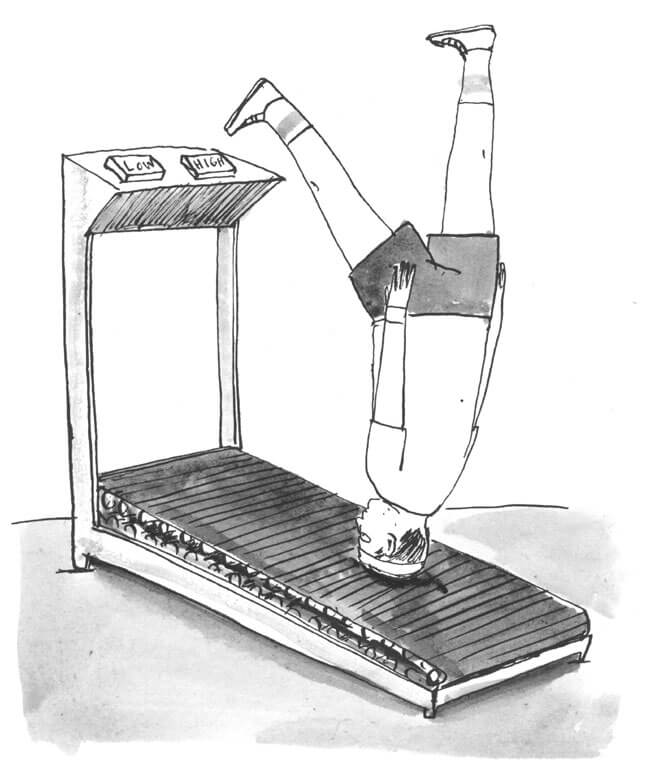
We all know exercise is your best shot at having a healthy heart, a strong immune system, and maybe even a 100th birthday party. Years of research have also shown that an active lifestyle boosts memory and cognitive capacity, and can slow the progress of neurodegenerative disease. But what actually changes in the brain when we go for a run? New research is showing some of the molecular reasons why keeping fit also keeps you sharp, and it has to do with your brain’s untapped potential for growth.
Dr. Fred Gage of the Salk Institute has been hunting down the neuronal consequences of exercise for over a decade. In 1998, Gage and colleague Peter Eriksson rocked the neuroscience world with their discovery that humans keep producing new neurons throughout adulthood. He also showed that mice and rats that regularly ran on exercise wheels grew more neurons than a couch-potato control group. But until recently, the mechanisms of this process have been poorly understood.
Recently, Gage and collaborators have been publishing a variety of papers describing the molecular pathways by which exercise leads to brain growth. Gage’s work in the 90’s showed that our brains have a store of stem cells that lie largely dormant, waiting for some stimulus to initiate cell division. A growth factor called bone morphogenetic protein (BMP) works to control cell division throughout the body, including in the brain. The more BMP, the less growth. Regulatory factors like BMP are essential to a healthy body; studies have shown that the absence of BMP activity is linked to colon cancer.
But as we get older, higher counts of BMP accumulate in the brain and keep our neural stem cells asleep. This is where exercise comes in. Within one week of being given an exercise wheel, mice showed half as much BMP signaling in their brains. The mice also showed increased levels of the protein Noggin (yes, I know), which acts as a BMP-antagonist. There are still questions as to whether exercise directly decreases BMP, or does so indirectly via Noggin production. Either way, stem cells begin to divide and new neurons are born.
Gage has observed that neurogenesis is pronounced in the hippocampus, a brain structure that is essential to long-term memory and navigating space. This could help to explain how exercise helps mitigate the effects of Alzheimer’s disease; as AD progresses, the hippocampus is the first target of severe neurodegeneration. When researchers pumped mice full of Noggin, they saw huge improvements in their maze running skills (mostly memory and spatial navigation, i.e hippocampal functions).

Researchers have long known about the link between exercise and brain function. In elderly populations, even small amounts of daily exercise showed increased levels of concentration, learning ability, and abstract reasoning – not to mention memory. Most theories have cited increased blood flow & better oxygen delivery to the brain as the major mental health benefits of exercise, and this is undoubtedly true. But these new relationships help to tease out some of the other molecular mechanisms at work when we’re at play.
But don’t start lining up for Noggin injections just yet. Like most biological systems of balance, the relationship between BMP and Noggin is an important one. A recent study showed that neurons placed in Noggin-soaked petri dishes stopped BMP signaling altogether, with some undesirable effects. As predicted, the stem cells divided out of control and were eventually used up; after a few weeks, neurogenesis slowed to a creep. BMP is an essential ingredient to keeping the brain’s stem cell stores intact.
So the next time you sit down to watch television, or, um, surf the internet, remember: your BMP count might be getting into dangerous territory. Best case scenario, you’ll be forgetting things faster in your twilight years. Worst case scenario? Death.
[image credit: The New York Times, The San Diego Union-Tribune]


